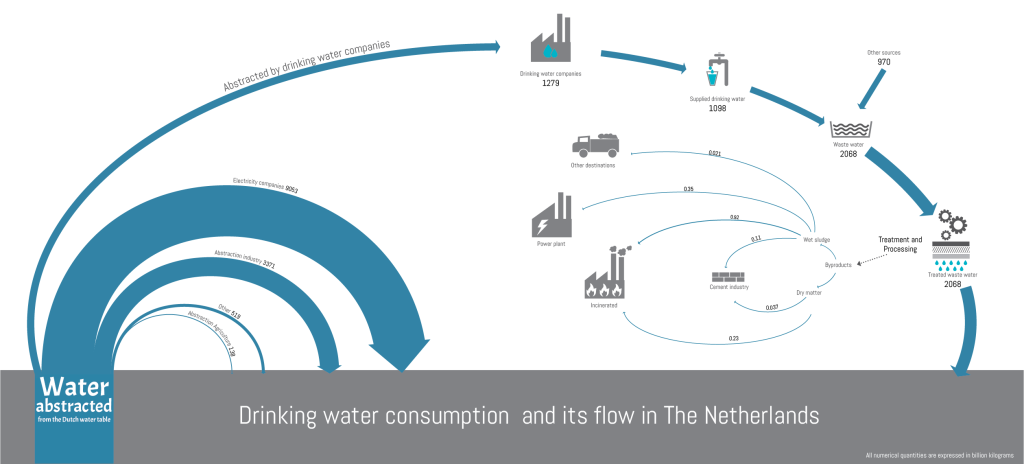Following up to my two previous posts on Iran’s Energy Flows and Iran’s Energy production and consumption, here is the third Sankey diagram I could find in the report ‘Iran and World Energy Facts and Figures, 2012’ published by Ministry of Energy (MOE) of the Islamic Republic of Iran.
It is on greenhouse gas (GHG) emissions caused by the energy sector in the country
This is interesting, as the setup is reversed in comparison to the typical energy flow diagrams we all know. Here, the consuming sectors are on the left, alongside the energy generation sector itself. The middle section of the diagram sorts the arrows by energy carrier that causes the GHG emissions: natural gas contributes 53% (orange) and petroleum products 45.6% (blue). The third column shows a breakdown into the gases CO2, CH4 and N20.
No absolute values are given in the diagram, the magnitude of the flow amount to 100%. However the detailed values can be found in the accompanying tables in the report: carbon dioxide with 556,866,000 tons, methane 57,000 tons and nitrous oxide 11,600 tons (all values for 2012). Mind that these are absolute values, so in order to understand the impact on climate change one would have to multiply with the respective emission factors for methane and laughing gas and normalize them to kg CO2-equivalents.
